If you still have grass, grow now, graze later
Stockpile Missouri pastures by fertilizing now and delaying grazing to save hay and boost forage quality through winter.
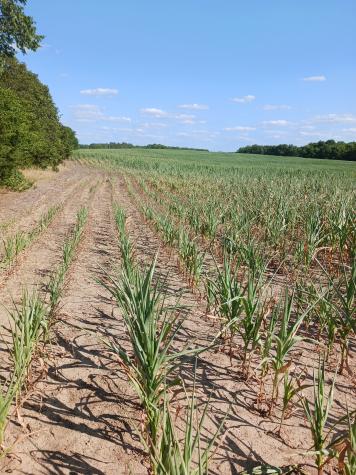
Now is time for 911 emergency forages
This is part of an MU Extension series to help row crop and livestock producers manage drought. BOONVILLE, Mo. – Forage producers searching for options amid sustained drought should consider emergency forages, says Todd Lorenz, University of Missouri Extension agronomy specialist. The drought is not going away and producers need to find a way to fill feed gaps, he says. Three years of back-to-back drought leave producers searching…
Drought meetings offered in SW Missouri Aug. 4
Attend free SW Missouri meetings Aug. 4 for cattle producers on drought survival, hay management, and feeding strategies.
Early weaning calves to reduce nutrient needs during drought
STOCKTON, Mo. – “Early wean calves to reduce cow herd nutrient needs to match drought-limited feed resources,” says Patrick Davis, University of Missouri Extension livestock field specialist. In addition, early weaning can improve calf performance because calves are put on a more nutritious diet following weaning.Davis discusses strategies to help cattle producers be successful in early weaning calves:
Seed for an 'annual pasture within a perennial pasture'
COLUMBIA, Mo. – Producers looking for ways to grow forages during drought might consider planting an “annual pasture within a perennial pasture,” says University of Missouri Extension state forage specialist Harley Naumann.Naumann says this is a good year to add cool-season annual grass seed to perennial pastures. Cool-season grasses can extend the growing season, provide excellent nutritive value and complement thin pastures.
Use caution when using drought-stricken corn for relief feed
This is part of an MU Extension series to help row crop and livestock producers manage drought. COLUMBIA, Mo. – Some drought-stricken corn may have more value as cattle feed than grain this year. Droughty corn offers options when feed supplies are tight, but producers should think the process through, says University of Missouri Extension livestock specialist Gene Schmitz. There are three main things to do before deciding to use…
Don't waste precious hay during drought
Protect hay during drought by feeding wisely, reducing waste, and improving herd performance with simple strategies.
Check with your crop insurance agent before you cut
Consult your insurance agent before cutting or grazing crops to protect coverage and avoid losing potential claims.
Things to consider as you feed your way through the drought
“Cattle producers are dealing with varying degrees of drought and forage resources,” says Patrick Davis MU Extension livestock field specialist. Some cattle producers have received adequate rain and are recovering from the 2022 drought through rebuilding forage and cattle resources. Other cattle producers have received limited rain and are continuing to deal with drought conditions from 2022 with less resources in 2023.
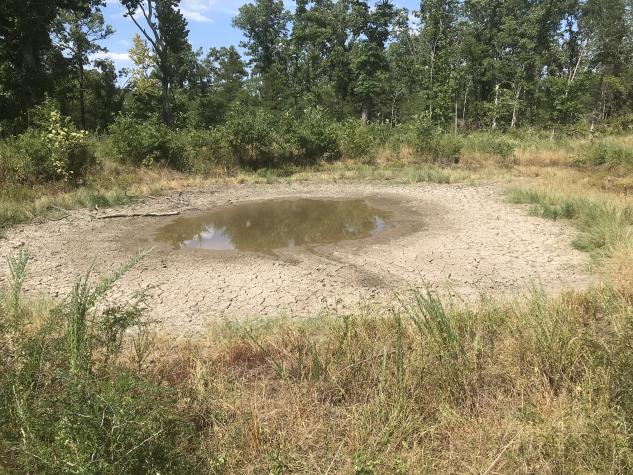
Top 5 livestock forage actions to take during drought
COLUMBIA, Mo. – Most of Missouri is experiencing drought conditions, which have extended almost a full year, putting enormous pressure on cattle producers. University of Missouri Extension specialists have five top action items for producers to do now:
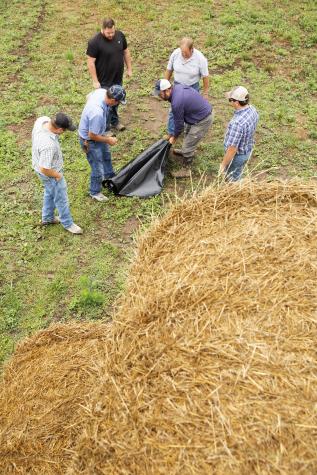
Ammoniation stretches hay supplies during drought
This is part of an MU Extension series to help row crop and livestock producers manage drought. For more articles, go to Drought Resources. COLUMBIA, Mo. – As hay supplies dwindle, University of Missouri Extension agronomist Rusty Lee is showing forage producers how to use a simple, inexpensive treatment to stretch feed supplies during drought.
Trees in drought: Love and water deeply
VERSAILLES, Mo. – With more than 90% of Missouri under drought, browning lawns and wilting cornfields are common sights. But don’t forget about your trees. A lawn can be replaced in months, but it takes decades to replace a large tree, says University of Missouri Extension natural resources specialist Joni Harper. Trees are a valuable part of home landscapes, says Harper. They beautify surroundings and help save energy by providing…
Use spray-wait-spray to renovate drought-stricken pastures
This is part of an MU Extension series to help row crop and livestock producers manage drought. For more articles, go to https://mizzou.us/DroughtResources. COLUMBIA, Mo. – Forage producers can convert tall fescue pastures to nontoxic novel-endophyte fescue without incurring the main expense usually associated with pasture renovation through mid-July.
What is the cost of baling wheat straw?
This is part of an MU Extension series to help row crop and livestock producers with drought.COLUMBIA, Mo. – With Missouri forage supplies in short supply due to drought, some livestock producers are looking at wheat straw as feedstuff, despite its poor nutrient quality.
High heat and dry conditions can put fish ponds at risk
High heat and dry conditions can lower pond oxygen and water levels, putting fish at risk and requiring careful management.
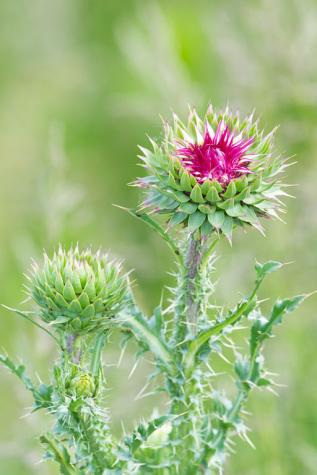
Bristle for thistles that run amok
Musk and bull thistles have spread across Missouri fields, requiring control. Learn strategies for thistle management, including mowing and biological methods.
Water deeply and wisely during drought
During drought, water plants deeply and wisely to help them survive dry spells. Follow expert tips for effective watering.
MU Extension specialists report thin pasture stands, low yields
COLUMBIA, Mo. – University of Missouri Extension agronomists are reporting thin pasture stands and low yields statewide in the wake of re-emerging dry conditions.“Most barns are empty. Most fence rows are empty,” says Terry Halleran, an agronomist in Hickory County in southwestern Missouri. “Farmers are getting nervous.”
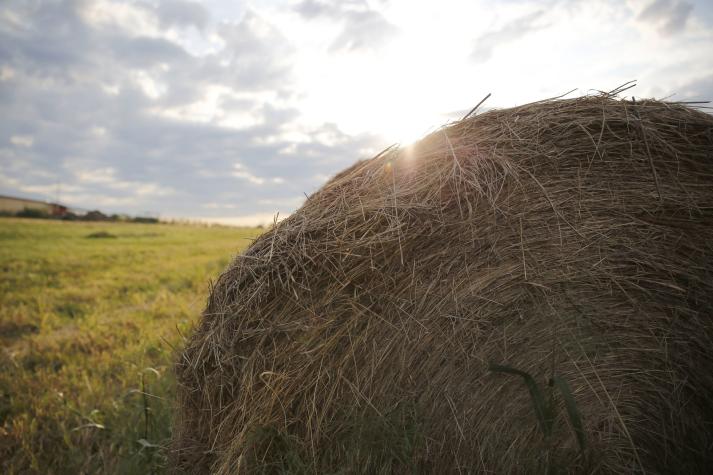
Cheap hay isn't cheap
Cheap hay can cost more in the long run due to poor quality, storage, and feeding practices.
Regional drought calls for winter feed strategies
MOUNT VERNON, Mo. – Drought in southwestern Missouri calls for long- and short-term feed plans for beef and dairy herds. University of Missouri Extension state dairy specialist Stacey Hamilton urges producers not to panic as local feed supplies dwindle. There are options to carry herds through winter until spring pastures green.
Plan to meet weaning challenges
SEDALIA, Mo. – Weaning spring calves may be more of a challenge this year because of short pasture supplies and the questionable nutritional value of this year’s hay crop.“Pay very close attention to body condition score in September and be prepared to wean, if necessary,” said Gene Schmitz, University of Missouri Extension livestock specialist in Sedalia.Schmitz recently worked through a feeding scenario for a producer that highlights…
Drought recovery forage options
GALENA, Mo. – “If there was ever a year to focus on stockpiled tall fescue, this is it,” says Tim Schnakenberg, University of Missouri Extension agronomy specialist in Galena.
Apply fall nitrogen now to boost forage stockpiles
COLUMBIA, Mo. – University of Missouri Extension nutrient management specialist John Lory recommends applying fall nitrogen in mid-August to cool-season pastures. Despite drought conditions in much of the state, Lory says, “we need to get nitrogen applied now so we can take full advantage of the rains when they do arrive.”
Drought requires feed efficiency in cattle
Drought strains hay supplies; cattle producers can improve efficiency with feed testing, supplements, and careful ration planning.
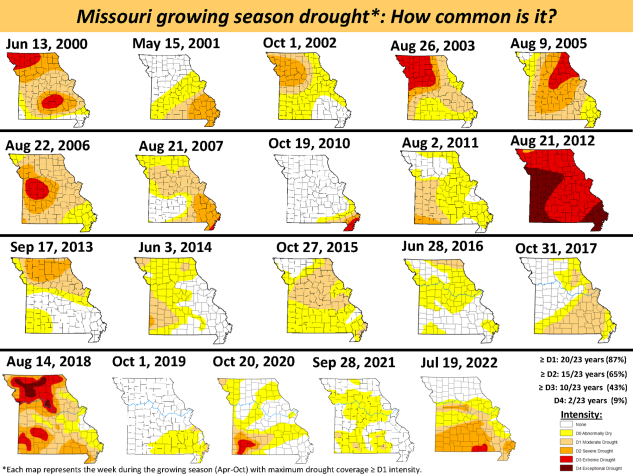
SW Missouri no stranger to drought in forages
WEST PLAINS, Mo. – Southwest Missouri farmers and livestock producers are no strangers to drought. In 2022, livestock owners face short-term and long-term challenges growing pastures for grazing and winter feeding.
